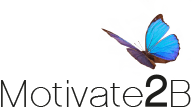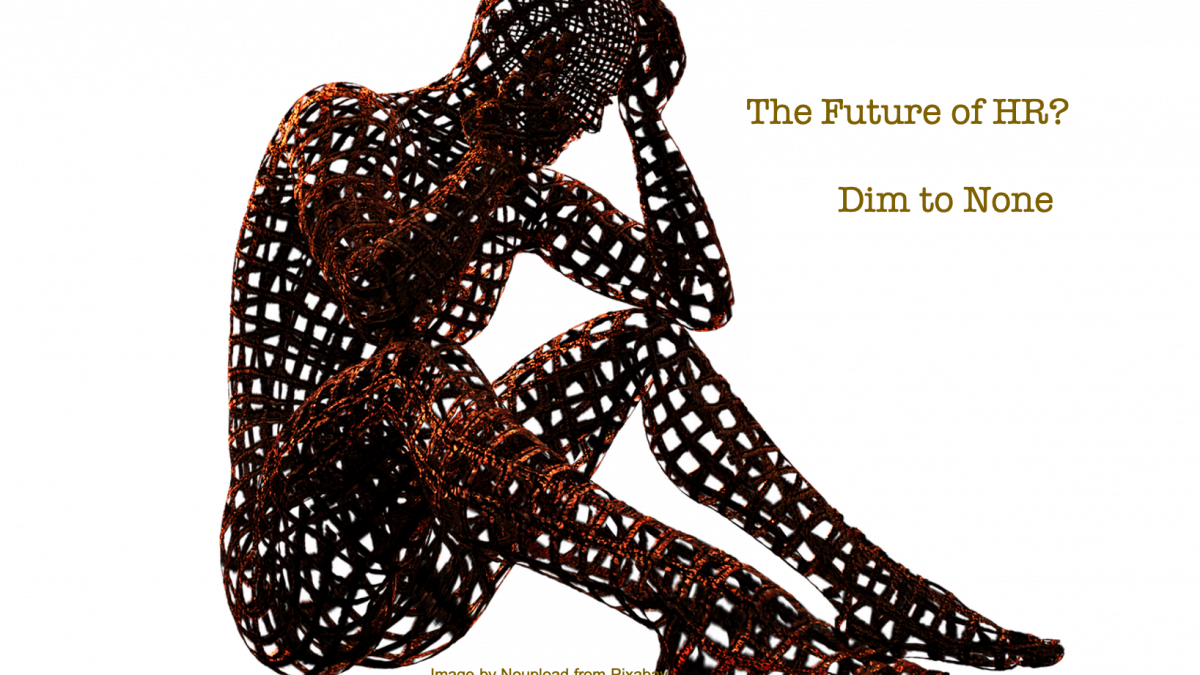The Future of HR? Dim to None
What’s the future? – Who knows? It depends how we want to live in the future.
What’s the future of HR? – Dim to none when it comes to life and work in the digital age. But there is hope and a key for the better.
How can the answer to these seemingly identical questions can be that different? Well, while the first question is general in nature, the second one is much more specific referring to HR, or Human Resources. And this makes all the difference. For, there is no future for human resources in the digital age, unless we continue to treat our workforce and each other as human ‘resources’.
The bluff of human assets
It is true that many companies say that their employees are the most important assets for the company. At the same time, however, they are viewed and treated only as resources, i.e., „human resources“. And resources have to function. In order to shape the environment I have to get the most out of this resource; I have to optimize it.
The only problem is that we humans are not resources – even though we often behave and want to be treated as such. We are humans and not machines.
In search for happy workplaces
A look at the statistics on how happy employees in the Western world are with their jobs shows that the value doesn’t quite match up with the pretended ideal working world. According to Gallup’s 2017 Gallup study State of the Global Workplace, only 13% of employees worldwide are engaged in their job, meaning they are fully focused and passionate about it. The vast majority are not engaged at work. Neither do people get personally absorbed in their work, nor do they invest extra energy or passion in their work. 18% are even actively disengaged and unhappy. They drain energy from others by making work hell, especially for engaged employees, or by flaunting their chronic dissatisfaction. Other studies[i] confirm these figures with only a few variations.
From this point of view, the increasing number of depression and burnout is not really surprising. It is a confirmation. It is tragic and completely unnecessary. Alas, what do we do about it?
An ailing workforce
In Germany alone, the number of people suffering from depression has doubled since the turn of the millennium. Mental illnesses such as depression or burnout are now the third most common cause of incapacity to work in Germany. In Europe [ii], an average of 5.3% of men and 8.8% of women suffered from depression in 2014.
Harter and Pendell (2019) found out that as many as 67% of employees suffer from mild to severe burnout at work.[iii]Even more tragically, illnesses such as depression and burnout may be recognized by health insurers but are not really taken seriously by the general public and are often rather laughed at. In this respect, the number of unreported cases of the working population suffering from mental illnesses could well be higher.[iv] It simply does not fit into the picture when a person in his mid-twenties already suffers from burnout or depression and is absent from work for days or weeks.
Interestingly, the main reasons for burnout are not so much the expectations of hard work or performance, but rather the way employees are treated. To reduce the risk of burnout at work, Wigert and Agrawal (2018) recommend that managers should care about treating all employees fairly, manageable workloads, clear roles and responsibilities, transparent and open communication, and avoiding unnecessary time pressure. [v]
The competition of technical vs. human resources
The number of people suffering from depression and burnout or simply unfulfilled in their jobs is increasing. At the same time, more and more machines are taking over the work of us humans. The competition of human vs. technical resources is becoming fiercer. For reasons of cost and efficiency, the machine resource is winning more and more often. This is bitter, and yet we ourselves have helped to create this situation. As long as we regard, behave and treat ourselves as human resources and not as human beings, the situation is more likely to worsen than to ease.
From HR to Business Partners to People
In 1998 I joined the German software goliath SAP. It was the early days of the internet. Technology became more prevalent in business and in normal life. SAP was the frontrunner of business software and the company thrived. And indeed, it was all about the firm. Employees like me were mere numbers. But, hey, I worked for one of the most prestigious corporation not just in Germany but worldwide. Did anyone really care how I felt or how I was treated? Not really. Hence, I left SAP after a relatively short time.
A couple of years later, in 2007, I gave SAP another chance. The internet bubble had already bursted. SAP survived and still thrived. And yet things were different. For SAP had understood that it was no longer sufficient to focus on the firm alone, but that the customers must come first. User experience was just as important as shareholder value. And employees? They were valued as important assets. And HR was not just HR, but business partners. Well, it did not really convince me. Again, I left the company for good.
2019 I listened to a TEDx talk of SAP’s Head of People German, Cawa Younosi. He shared how the people culture at SAP had changed over the years. People were treated as people. The term HR vanished and was replaced by “people” to express what its purpose and services were and are all about: people. – SAP truly came a long way, finally and fortunately. For it can be a role model for the future of “HR” and how the actual driver of business, i.e., people, can make all the difference.
Other companies follow suit. Microsoft’s new CEO, Satya Nadella, helped change the firm’s culture from a cold, technical and mechanical, often bureaucratic tanker to a human-centered, agile and thriving business. He describes this transformation in his book ‘Hit Refresh: The Quest to Rediscover Microsoft’s Soul and Imagine a Better Future for Everyone’.
Another good example is the insurance corporation Allianz. It has launched a new initiative, #Lead, with the purpose of transforming a 130-year-old corporation into a modern, dynamic, adaptive and agile learning organization and network which serves its customers, employees, society and business. While the term “HR” officially still exists, “HR” initiatives are named to reflect the new spirit and thrust. For example, an agile transformation project was renamed from agile@HR to agile@people. This change may appear to be cosmetic and superficial, but it reveals the focus and customers of the project: people.
A key to the future for classical HR
The three examples – SAP, Microsoft and Allianz – all have one thing in common: They shifted its focus from the firm and shareholders to delighting their customers and to building a happy workplace. They don’t see their employees as mere resources or financial assets but as the driver for internal change. They understand that happy and engaged employees not only serve customers better but that they also positively affect financial performance.
Hence, a key to the future for classical HR is to review and redefine its purpose by answering two simple questions: Why are we here? Who are we? Of course, there can be numerous answers. Let’s have a look at three to start with:
- Why are we here? – To serve our firm and shareholders.
Who are we? – We are a functional department.
Such a response is an indication of a classical, traditional HR and business. Future outlooks? Dim to none. - Why are we here? – To serve our customers.
Who are we? – We are business partners.
Such a response means that it is possible that HR and business are undergoing an Agile transformation. - Why are we here? – To unfold the human potential in our organizations for the benefit of our customers, employees, society and business.
Who are we? – We are enablers.
Such a response signals the dawn of a new HR as in Human Recognition and human business.
And you?
Why are you here?
Who are you today?
Who do you want to be in the future?
Endnotes
[i] Deloitte. (2018). 2018 Deloitte Millennial Survey. Millennials disappointed in business, unprepared for Industry 4.0.
Deloitte University EMEA. (2018). European Workforce Survey: Voice of the workforce in Europe. Understanding the expectations of the labour force to keep abreast of demographic and technological change.
DIE ZEIT (2018) Fragen zur Arbeitswelt.
Knieps, F. (Hrsg) and Pfaff, H. (Hrsg) (2017) Digitale Arbeit – digitale Gesundheit. Berlin: Medizinisch Wissenschaftliche Verlagsgesellschaft. Available at: https://www.bkk-dachverband.de/fileadmin/publikationen/gesundheitsreport_2017/BKK_Report_2017_gesamt_final.pdf.
Volini, E. et al. (2019). From employee experience to human experience: Putting meaning back into work. 2019 Deloitte Global Human Capital Trends. Deloitte.Insights.
Hagel, J. et al. (2016). 2016 Shift Index: The paradox of flows: Can hope flow from fear?
[ii] Radtke, R. (2019). „Statistics on depression and burnout syndrome,“ [in German] available online at: https://de.statista.com/themen/161/burnout-syndrom/
[iii] Harter, J. und Pendell, R. (2019). 10 Gallup Reports to Share With Your Leaders in 2019, online verfügbar unter: https://www.gallup.com/workplace/245786/gallup-reports-share-leaders-2019.aspx
[iv] See also Neller, M. (2018, October 21). „Germany – Land of the Depressed?“ [in German] Welt Online, available online at: https://www.welt.de/wirtschaft/article182415686/Depression-Darum-erkranken-so-viele-Deutsche-daran.html.
[v] Wigert, B. und Agrawal, S. (2018). Employee Burnout, Part 1: The 5 Main Causes, online verfügbar unter: https://www.gallup.com/workplace/237059/employee-burnout-part-main-causes.aspx

